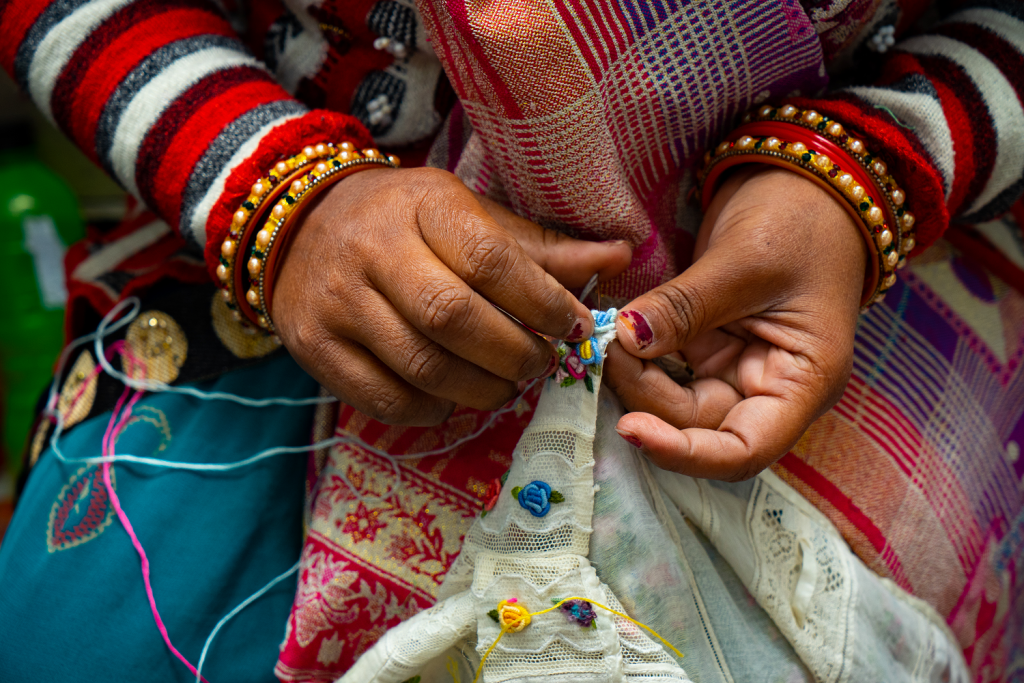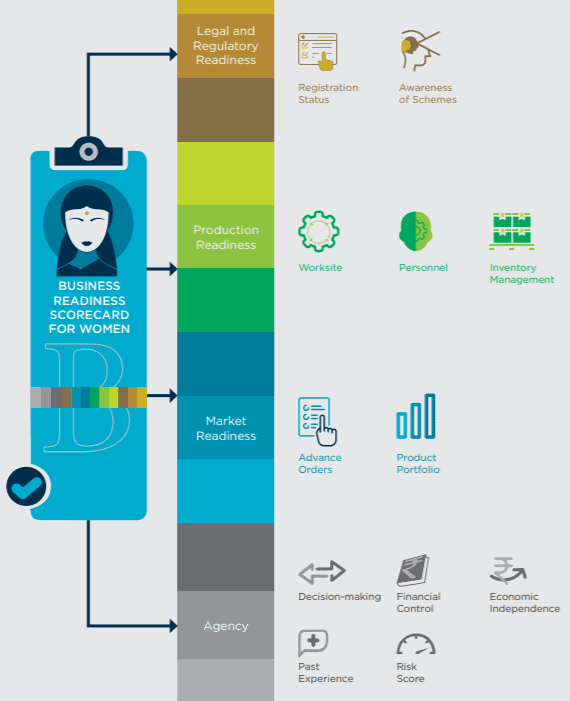Co-Author: Ria Dutta
Women entrepreneurs contribute significantly to the Indian economy. There are over 3 million MSMEs owned fully or partially by women that collectively contribute 3.09% of industrial output (IFC, 2014). The handicraft and handloom sectors, particularly, provide low cost, green livelihood opportunities to millions of families. The sector also has the potential to support families in times of agrarian distress and preserving traditional arts and crafts.
While 50 percent of workers in these sectors are women, 71 percent of these women are not literate. With limited technical knowledge and business expertise, women are not able to take well-informed risks to scale their businesses.
To understand this segment better, LEAD at Krea University conducted a study with 800 entrepreneurs across four districts in Rajasthan and Tamil Nadu. Our 2019 findings suggest that home-based businesses provide women an opportunity to participate in economic activities, while mitigating time, mobility and literacy constraints. Mostly driven by traditional knowledge, our respondents consider home-based businesses a ‘respectable’ alternative to supplement their household income. In summary, we have identified four key barriers that keep women from scaling their businesses:
- Home always comes first: Women devote only 5.8 hours a day on average to their home-based business, while as much as 6.6 hours of their time is spent on household and care responsibilities. Time and mobility issues continue to remain barriers to expanding their business and honing entrepreneurial skills.
- They are artisans, but not entrepreneurs just yet: Subcontracting at piece rate by collective enterprises and private companies are dominant features of the market landscape. Over 70 percent of the women interviewed function in a closed communication channel by running piece-rate businesses and work on a contractual basis primarily to overcome mobility and travel constraints.
- Their aspirations are overshadowed by their limited agency and voice. 78 percent of respondents aspire to grow their business. With their outreach mostly limited to local markets and institutional affiliations, the artisans sell their products at the price offered by contractors.
- The power of one. Most home-based female entrepreneurs are solo entrepreneurs. Over 70 percent of respondents do not have any paid employees in a full-time or temporary capacity.
Our ‘Women Business Readiness Scorecard’ – is a policy tool to diagnose sector-specific challenges and help design targeted interventions that can address some of the above barriers. The scorecard consists of individual and ecosystem-level parameters to assess an enterprise’s readiness:
Women Profiles and their Recommended Pathways:
No two entrepreneurs are the same. This is more prominent for women entrepreneurs who are each cut out from a unique socio-cultural fabric. But from our discussions and from the data collected through our survey, three broad personas emerge:
- The millennial entrepreneur is young, literate, spirited, and risk taking with the goal of growing her young business. Between being mothers to young children, and enterprising young business-women, they sufficiently juggle the time and mobility constraint by choosing to work with contractual companies or Self Help Groups (SHGs). They could make the most of skilling interventions that focus on efficiency and can optimize disruptive technologies such as e-commerce, digital finance, and marketing efforts (such as product or process certification) facing towards export.
- The striving entrepreneur has some basic education but has mostly gained business know-how through experience. With the scope to still scale up their business, these entrepreneurs need mentorship, business management skills, access to credit, and a diversified customer portfolio. Being linked to demand aggregators who can explore the e-commerce market potential on their behalf could also be a potential opportunity.
- The latent entrepreneur who either inherited her business or opened it purely for subsistence: With little to no schooling exposure, and only traditional craft skills to rely on, the latent entrepreneur is risk-averse and is focused on steady income after operating her business for many years. They would benefit the most from the power of collectives that can help them collectively negotiate fairer terms of trade with other private players.
The scorecard can enable and empower female entrepreneurs to evaluate their current sectoral performance as well as help identify the key constraints and high-performance areas for enterprises. Our scorecard was designed for the cottage industry in India that focuses on small scale manufacturing units operating from home, rather than a purpose built facility. It can be an important addition in the toolkit of policymakers, practitioners and other stakeholders in the ecosystem to support enterprises with growth potential across sectors and prioritise areas that require intervention.



















